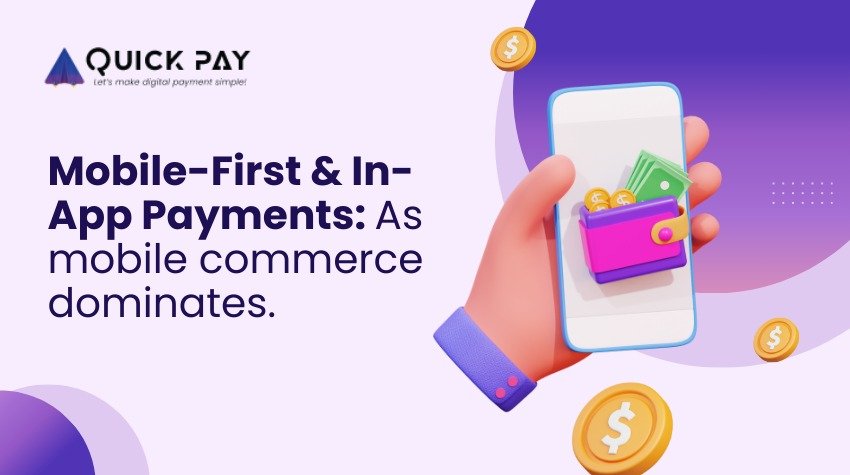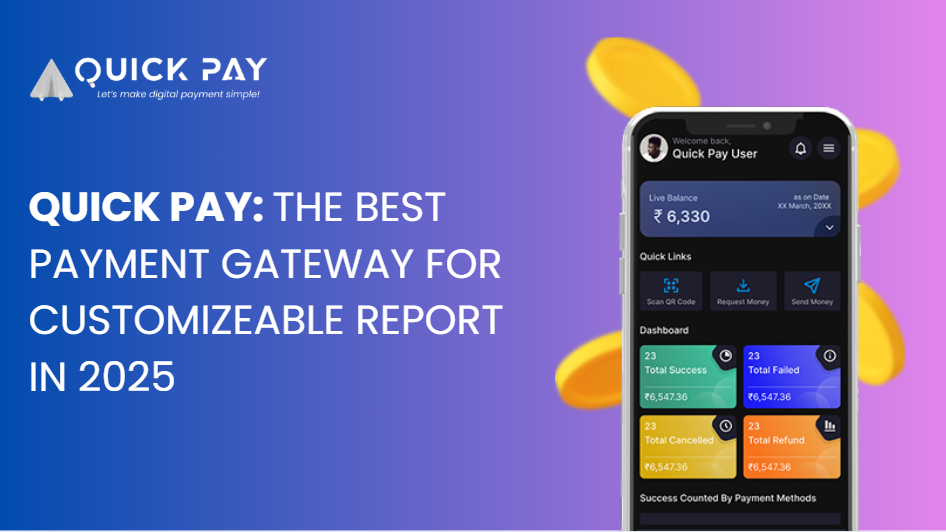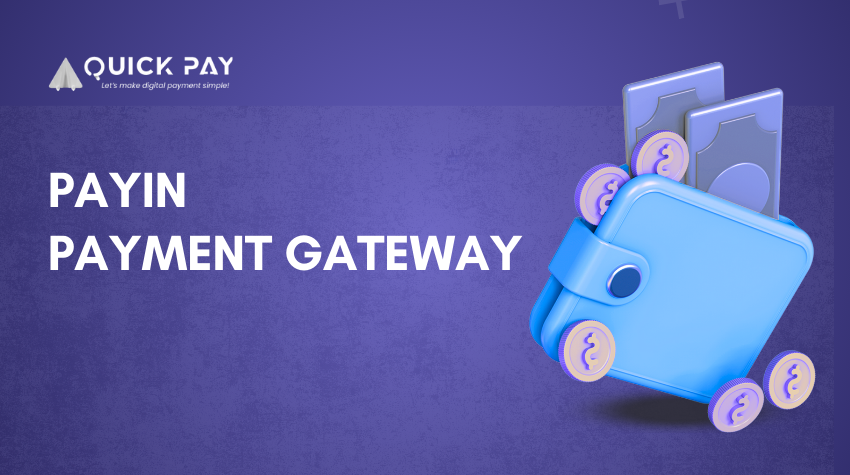In today's fast-evolving digital world, the dominance of mobile commerce is undeniable. With smartphones becoming an extension of our hands and lifestyles, consumers are increasingly making purchases, paying bills, booking tickets, and even subscribing to services directly through their mobile devices. This massive shift has given birth to a new era in online transactions-mobile-first and in-app payments. For businesses, adapting to this new behavior is no longer an option; it's a necessity.
In this detailed guide, we'll explore what mobile-first and in-app payments are, why they matter in 2025, how businesses can integrate them effectively, and how the right payment gateway like Quick Pay can make all the difference in customer experience and business growth.
What Are Mobile-First and In-App Payments?
Mobile-first payments refer to payment experiences designed primarily for mobile users. It means that everything from the layout, user journey, and transaction process is optimized for smaller screens and touch-based interfaces.
On the other hand, in-app payments are transactions completed within a mobile application. Instead of being redirected to a browser or external website, users complete the entire checkout process inside the app-seamlessly and quickly.
Both models aim to minimize friction, boost convenience, and enhance the user experience by removing unnecessary steps in the checkout journey.
The Rise of Mobile Commerce: A Business Reality
Mobile commerce (m-commerce) now accounts for over 73% of total e-commerce sales worldwide, and this figure is growing steadily. The reasons are simple:
- Smartphone penetration is at an all-time high
- Customers prefer convenience over complexity
- Mobile apps offer personalized shopping experiences
- Social media ads directly lead to mobile-based shopping journeys
As users increasingly rely on their mobile devices for daily tasks, businesses need to ensure that their payment process aligns with this shift. A sluggish, confusing, or non-optimized mobile payment experience can result in lost sales and customer churn.
Why Mobile-First Payments Matter for Businesses in 2025
Here are some compelling reasons why every business-whether small or large-needs to adopt a mobile-first payment approach:
- Customer Expectations Have Changed
Users expect fast, simple, and secure mobile payment options. Whether it's paying for food delivery, purchasing clothes, or renewing a subscription, no one wants to switch devices or enter long card details anymore.
- Faster Checkout = Higher Conversion
Fewer clicks and less friction equal better conversions. Mobile-optimized checkouts ensure users can pay in seconds, reducing cart abandonment drastically.
- Supports Growth in Emerging Markets
In countries like India, where mobile data usage is among the highest globally, mobile-first solutions help businesses tap into Tier-2 and Tier-3 cities.
- Boosts Brand Loyalty
A smooth payment experience builds trust. Customers are more likely to return if they find your app or site easy and quick to transact with.
- Enables Personalization
Mobile apps allow businesses to collect behavioral data, enabling them to offer customized experiences, discounts, and one-click payments.
Benefits of In-App Payments
In-app payments elevate the mobile experience even further. Let's look at the specific benefits they offer:
- Convenience: No redirects, no login to other platforms-everything happens inside the app.
- Speed: Saved cards, wallets, or UPI details help complete payments in under 10 seconds.
- Better Retention: Easier payments keep users inside your app ecosystem.
- Upselling Opportunities: With in-app payments, it's easier to offer upgrades, add-ons, and cross-sell without disrupting the experience.
- Security: With biometric authentication and tokenization, in-app payments are secure and trusted by users.
Role of a Payment Gateway in Mobile & In-App Payments
A payment gateway is the bridge between a customer and the merchant when processing online transactions. In a mobile-first world, choosing the right payment gateway is critical.
Here's how a modern payment gateway like Quick Pay helps businesses adapt to mobile and in-app payments:
- Mobile SDKs
Quick Pay offers mobile SDKs (Software Development Kits) that integrate seamlessly into Android and iOS apps. These SDKs ensure smooth, bug-free, and fast payment experiences.
- Multiple Payment Methods
Quick Pay supports all popular payment methods like UPI, wallets, net banking, debit/credit cards, EMI, and even BNPL (Buy Now, Pay Later). This flexibility ensures that users can pay the way they prefer-on mobile.
- One-Click Payments
Saved cards, tokenization, and biometric authentication enable one-click payments within your app, drastically improving repeat purchase rates.
- Real-Time Analytics
Track your mobile transaction performance, understand customer behavior, and optimize payment flows with real-time dashboards.
- High Success Rate
Quick Pay ensures high transaction success rates on mobile by optimizing routing, retry logic, and local payment processing. No more failed payments due to weak networks.
- Fraud Detection
AI-powered fraud detection helps prevent chargebacks, fraud attempts, and suspicious transactions-especially crucial in mobile payments.
Key Features Your Mobile Payment Gateway Must Have
When selecting a mobile-first payment gateway, look for these features:
- Responsive design for all screen sizes
- UPI integration with dynamic QR codes
- Tokenization support for card safety
- Fast checkout with saved preferences
- SDKs for Android & iOS
- Real-time failure response and retries
- Secure with PCI DSS and encryption
- 24/7 support in case of app integration issues
Quick Pay checks all these boxes-and more.
How to Integrate Quick Pay for Mobile & In-App Payments
Quick Pay makes integration easy for developers and product teams:
- Choose Your Platform: Android, iOS, Flutter, or React Native-we've got it all.
- Install the SDK: Download the mobile SDK from our developer portal.
- Customize the Checkout: Match your brand design and personalize the user flow.
- Test Transactions: Use our sandbox environment to simulate real-time payments.
- Go Live: After testing, switch to production mode and start collecting payments.
Our team provides complete documentation and technical support for a hassle-free onboarding.
Industries Benefiting from Mobile-First Payments
The impact of mobile-first and in-app payments isn't limited to just e-commerce. Industries across the board are seeing transformation:
- Food Delivery Apps
- Ride-Hailing Services
- EdTech Platforms
- Gaming & Entertainment
- Healthcare & Telemedicine
- Travel & Tourism
- FinTech and Insurance
- Subscription-Based Businesses
If you're in any of these sectors, your future growth heavily depends on mobile-first payment solutions.
Final Thoughts: The Future Is Mobile, and the Time Is Now
As mobile commerce continues to dominate, businesses that don't offer mobile-first and in-app payment options risk being left behind. Consumers now demand seamless, fast, and secure experiences-and they won't settle for less.
A robust payment gateway like Quick Pay empowers your business to meet these expectations head-on. From fast integrations and high success rates to secure transactions and mobile SDKs, Quick Pay is built for the future of payments.
So, if you're ready to transform your mobile customer journey and boost conversions-go mobile-first with Quick Pay today.
















